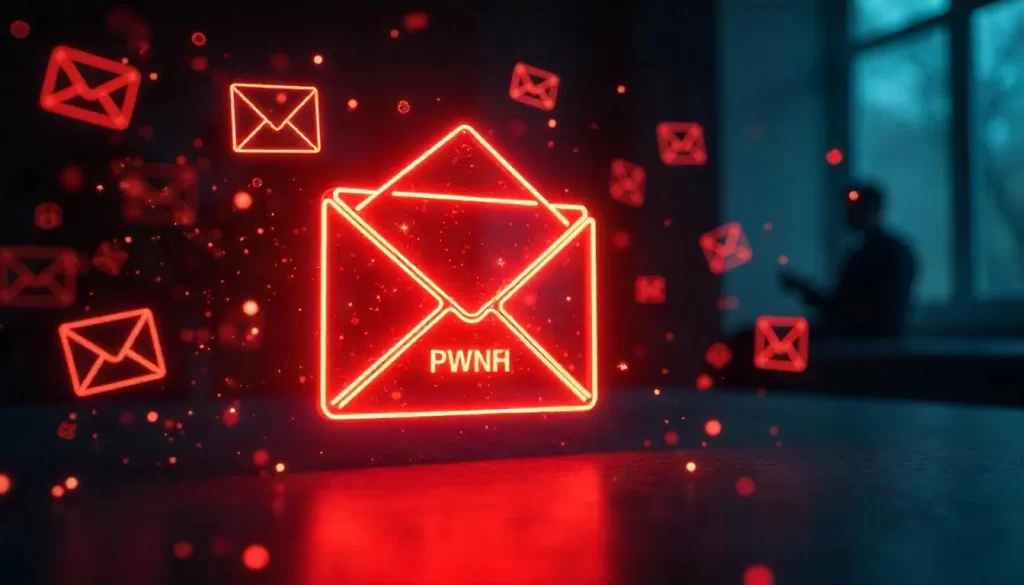In today’s digital world, email addresses are one of the most valuable pieces of personal information a cybercriminal can exploit. When your email address is pwned, it means that it has been compromised in a data breach. Once exposed, it opens the door for various malicious activities, such as phishing attacks, spam, or even identity theft. Understanding how email addresses become compromised and taking the necessary precautions is crucial for protecting your online security.
This article will walk you through the risks associated with a pwned email, how to check if your email has been compromised, and the steps you can take to protect yourself from future breaches.

How Email Addresses Become Pwned
The Rise of Email Breaches
Email addresses are prime targets in security breaches because they are often used as the gateway to other accounts. Hackers can use exposed email addresses to launch a variety of attacks, including phishing and credential stuffing. Many people also use the same password across multiple sites, making it easier for attackers to access their accounts once the email is compromised.
Data Breaches and Leaks
Email addresses are frequently exposed in data breaches where large-scale hacks occur on companies’ servers. Once hackers infiltrate a system, they may steal a massive amount of user data, including email addresses, passwords, and other sensitive information. This stolen data is often sold on the dark web or used in phishing scams to gather more personal details from unsuspecting victims.
Related Posts
- What Happens When Your Password Is Pwned?
- Importance of Cyber Hygiene and Monitoring
- How to Protect Yourself from Getting Pwned
The Risks of a Pwned Email Address
Phishing Attacks
Once a pwned email is in the hands of cybercriminals, they can easily use it for phishing attacks. In these attacks, hackers send fraudulent emails that look legitimate, often impersonating trusted companies or even friends and family. These emails typically contain malicious links or attachments designed to steal your personal data or install malware on your device.
Spam and Unwanted Ads
When your email address is compromised, it may start receiving spam and unwanted advertisements. While these may seem like an annoyance, they can also be used to try and extract more personal information from you or lead you into other malicious traps.
Identity Theft
One of the most serious consequences of having a pwned email is the potential for identity theft. Hackers can use your exposed email to access other accounts, such as social media, banking, or e-commerce sites. They can then commit fraud in your name, which can take a long time to resolve and lead to significant financial damage.
Account Takeovers
A pwned email address can be the entry point for account takeovers. Once a hacker gains access to your email, they can use it to reset the passwords of other linked accounts, giving them control over your digital life. This is why email protection is critical to maintaining control of your online presence.

How to Check if Your Email Has Been Pwned
Email Breach Checker
If you suspect your email address has been compromised, tools like “Have I Been Pwned” allow you to check if your email has been part of any known data breaches. Simply enter your email address into the breach checker, and you will receive information on any breaches involving your email.
Email Alerts for Breach Notifications
Many breach detection services provide email alerts. These notifications will inform you immediately if your email address has been exposed in a data breach, allowing you to take prompt action to secure your accounts.
Precautions to Take If Your Email Is Pwned
Step 1: Change Your Passwords
If you find that your email address is pwned, the first step is to change your password immediately. Use a strong, unique password that incorporates a mix of numbers, symbols, and both uppercase and lowercase letters. This will help ensure that your accounts remain secure even if your email address has been compromised.
Step 2: Enable Two-Factor Authentication (2FA)
One of the best defenses against pwned emails is enabling two-factor authentication (2FA). This adds an extra layer of security by requiring you to verify your identity using something you have (like a smartphone or authentication app) in addition to your password. Even if your password is pwned, 2FA will make it harder for hackers to access your accounts.
Step 3: Monitor Your Accounts for Suspicious Activity
After you’ve secured your email account, closely monitor any linked accounts for signs of unauthorized access or suspicious activity. Look for unfamiliar logins, changes to account settings, or unauthorized transactions. Promptly report any suspicious activity to the service provider.
Step 4: Implement Email Encryption
If you’re concerned about the security of your email communications, email encryption is a valuable tool. It ensures that only the intended recipient can read your emails, making it much harder for attackers to intercept sensitive information.
Related Posts
- Behind “Have I Been Pwned”: Database and Functionality
- Impact of Pwned Passwords and Accounts
- Real-World Examples of Major Breaches Involving Pwned Data
Additional Measures for Email Protection
Use a Password Manager
Using a password manager is a great way to ensure that your passwords are strong and unique for every account. A password manager securely stores your passwords and can even generate complex ones for you, reducing the chances of using weak or repeated passwords.
Be Aware of Phishing and Scams
Phishing is a major threat to email security. Be cautious when receiving unsolicited emails asking you to click on links or provide personal information. Always verify the authenticity of the sender and avoid clicking on suspicious links.
Regularly Update Your Security Protocols
Make it a habit to regularly update your email’s security protocols, such as your password and recovery options. Regularly review your email account’s security settings and make sure that recovery options are up to date, so that you can quickly recover your account if it’s ever compromised.
Key Takeaways
Pwned email addresses pose a serious threat to your digital security. From phishing attacks to identity theft, the risks are numerous. However, by taking simple steps like changing your password, enabling two-factor authentication, and using email encryption, you can significantly reduce the chances of becoming a victim. Regularly monitoring your accounts and staying vigilant about potential threats is key to protecting your email protection and personal data.
- Pwned emails are at high risk of phishing, identity theft, and account takeovers.
- Tools like “Have I Been Pwned” allow you to check if your email has been exposed in any data breaches.
- Protect your email by using strong passwords, enabling two-factor authentication, and regularly updating security protocols.
Frequently Asked Questions (FAQs)
What is a “pwned email address”?
A pwned email refers to an email address that has been exposed or compromised in a data breach, giving unauthorized individuals access to your personal information.
How can I check if my email has been pwned?
You can use services like “Have I Been Pwned” or other email breach checkers to see if your email has been exposed to a data breach.
What should I do if my email is pwned?
If your email is compromised, immediately change your password, enable two-factor authentication, and monitor your accounts for suspicious activity.
How can I protect my email from being pwned?
To protect your email, use strong, unique passwords, enable two-factor authentication, be cautious of phishing scams, and regularly update your email security settings.
